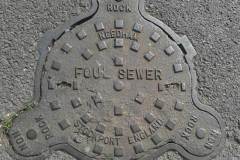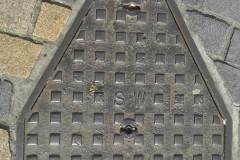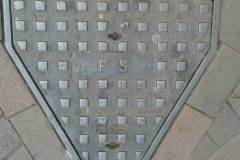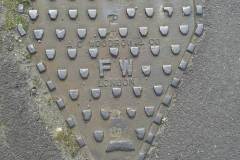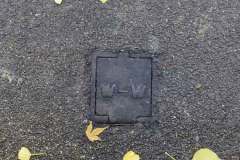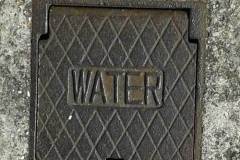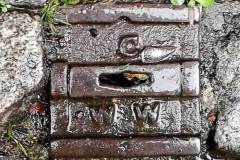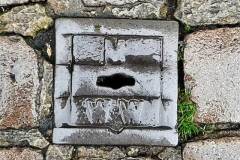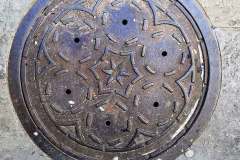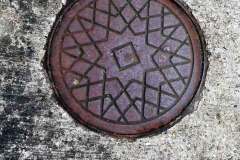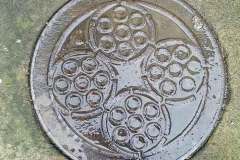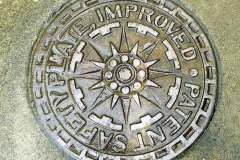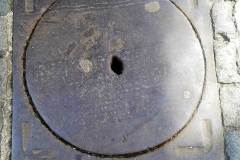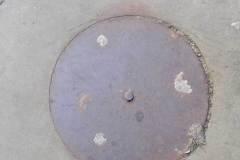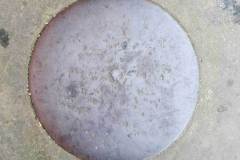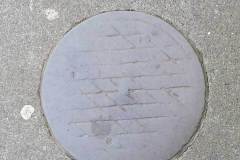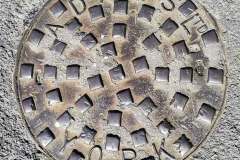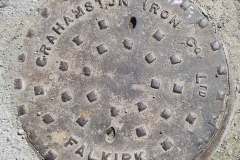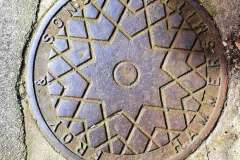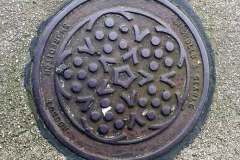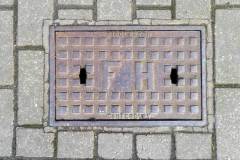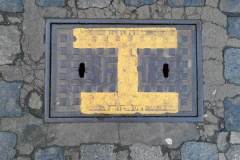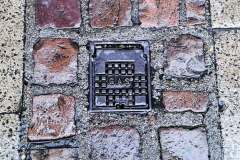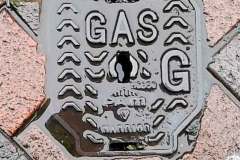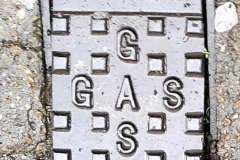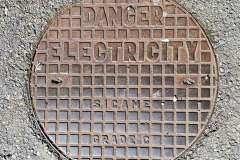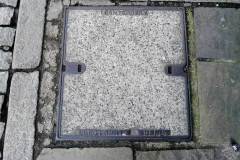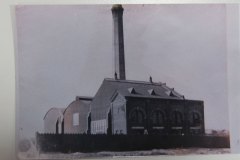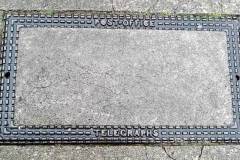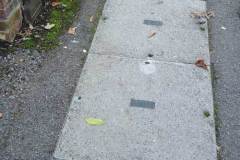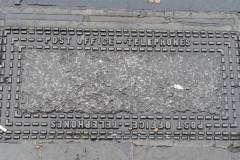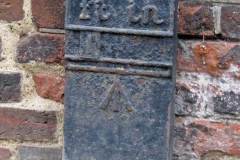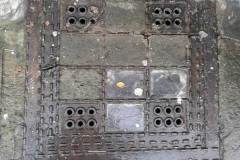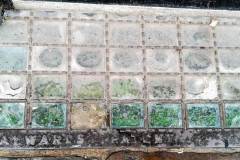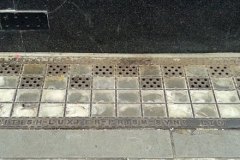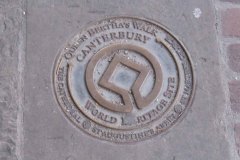This page shows examples of Canterbury’s metal street covers. We are grateful to Joyce Ainslie who has spotted them, identified them, and taken photographs to record them. The following images provide examples of just some of those she’s found. Where we have related material in other sections of the website, these are accessible through clickable links below.
The covers vary in their purpose, size, state of repair, aesthetic appeal, age (often unknown), etc. The little we know for sure (including locations) appears in the following comments and captions:
1. Some of the larger covers – each covering waste water in some form – are three-sided:
2. Covers associated with water supply are much smaller. Mains water supply arrived in the city in the 1870s (for more on this click here); for more on the earlier history of the city’s water supply click here
3. Most coal hole covers are round – supposedly since they are easy to roll into place, sit prefectly no matter how they are orientated, and (perhaps primarly) because they cannot fall down the hole they cover! The following examples have been chosen for their aesthetic appeal:
4. At the other end of the spectrum, through design or years of wear, some are strikingly simple and seem to lack any identifiable features. Three happen to be in the same street – Longport:
5. Several name the company of manufacture, and some give details on where they were from, in some cases far away:
6. A limited number were made locally and bear the name of the Biggleston business – click here for further details:
7. Gas supply for Canterbury was initiated in 1819 by the Canterbury Gas Light and Coke Company. During the early 1900s, reliance on gas fell quickly with the advent of a reliable electricity service in city. Some evidence of earlier gas suppliy in city streets (examples appear below). See other surviving gas features by clicking here
8. A city electricity supply was installed in 1899 – for details click here. For details of surviving electricity ‘Lucy boxes’ click here. Examples of surviving covers appear below:
9. The early 1900s brought the city’s first telephone cables – click here for details
Examples of their covers (and a cable splitting plate) appear below:
10. Some covers are intended to allow light through to illuminate whatever lie below – some local exmples follow:
11. Finally, some cover plates are modern and have nothing below at all – good examples are the 14 bronze inlays which make up the ‘Bertha Way’ which runs from the Buttermarket to St Martin’s church via Lady Wootton’s Green- for more details click here

